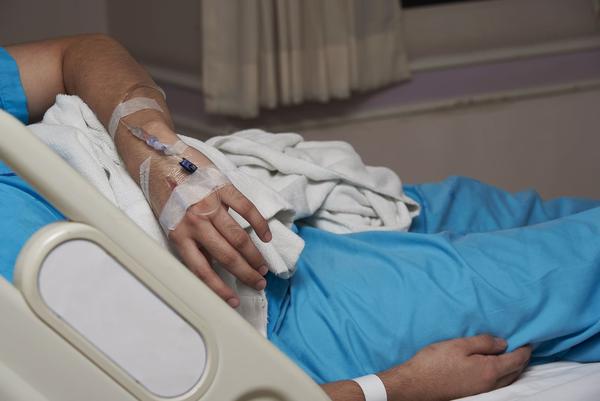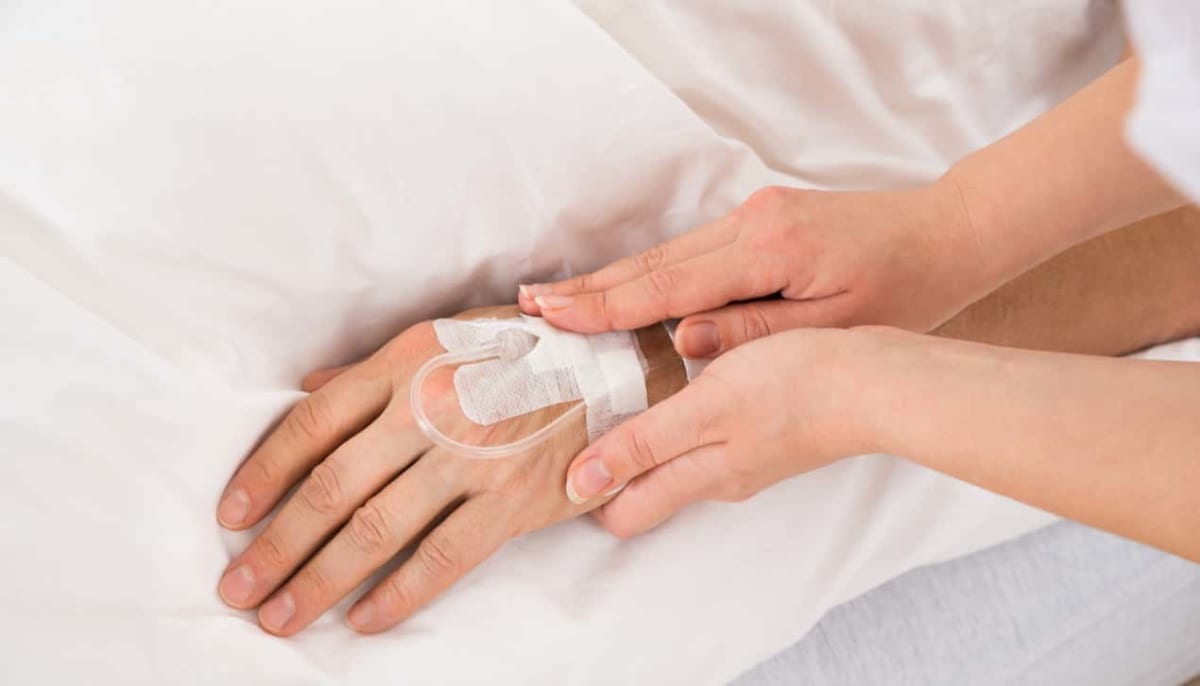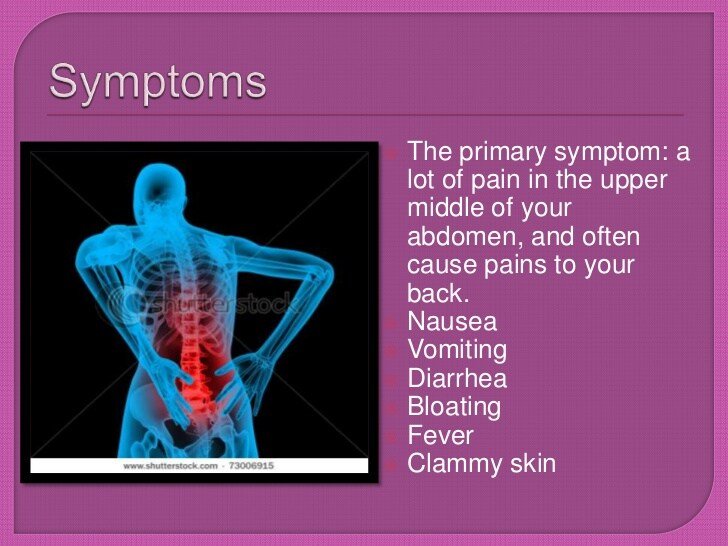Oral Fluid Therapy In Adult Cattle
Orally administered sodium is exceptionally well-absorbed in adult cattle , and sodium absorption is accompanied by the passive movement of water from the forestomach into the extracellular space . Both sodium and water must be absorbed to increase the extracellular fluid volume, with active sodium transport mechanisms in the forestomach accounting for approximately half of the sodium absorbed each day in healthy cattle . Maintenance fluid requirements should be administered orally only to adult cattle with normal gastrointestinal motility as oral administration of large fluid quantities to cattle with rumen atony results in ruminal sequestration of fluid and a slower rate of absorption. Although dehydrated cattle with forestomach hypomotility or atony appear to clinically benefit from ororuminal administration of large OES volumes, intravenous fluid administration is preferred in the initial resuscitation of sick dehydrated cattle with forestomach atony.
Why Are Intravenous Fluids Used
Water is essential to every cell in our bodies. In fact, our bodies are made up of about 60% water. When you dont have enough water in your body, thats called dehydration. A person needs IV fluids when they become dangerously dehydrated.
Serious dehydration may occur when you:
- Are sick .
- Exercise too much or spend too much time in the heat without drinking enough.
- Have a serious injury or burns.
- Have surgery, especially when youre asleep for a long time or are unable to eat or drink.
Intravenous Fluid Therapy In Neonatal Calves With Sepsis
Figure 9. Changes in echocardiographically determined cardiac index and systolic, mean, and diastolic arterial pressure over 72 h after the start of a standardized treatment protocol in 20 septic calves that included intravenous fluids and vasopressors. Data are presented as least squares mean and SE. The number of calves alive at each measurement time were 20 at 0 and 6 h, 17 at 24 h, 14 at 48 h, and 12 at 72 h. The gray shaded rectangle is the 95% confidence interval for the mean value for 10 healthy calves of similar age and body weight . *P< 0.0125 compared to time = 0 h value. Reproduced with permission from: Naseri et al. .
Figure 10. Representative pressure-volume loops, end-systolic pressure-volume relationship , and end-diastolic pressure-volume relationship in an endotoxemic calf. Caudal vena-caval occlusion was used to decrease preload while left ventricular pressure and volume were recorded. The left panel is before endotoxin was administered. The right panel is 1 h after start of endotoxin administration. Note that the administration of endotoxin markedly decreased end-systolic pressure and increased End-systolic elastance , decreased stroke volume and end-diastolic volume, slightly increased LV diastolic stiffness, and increased heart rate . The figure indicates that systemic arterial hypotension is the dominant cardiovascular derangement in acute endotoxemia. Reproduced with permission from: Constable .
You May Like: What Does It Mean When You Keep Having Heartburn
Does The Emergency Room Give Iv Fluids
Yes. Emergency rooms can provide IV fluids for patients experiencing severe dehydration. If you or a loved one are in this situation, an IV treatment will provide relief with the hydration being inserted directly into a vein. By doing so, the fluids, vitamins, and electrolytes go directly into the bloodstream instead of having to wait for your body to metabolize it through the gastrointestinal tract. As a result, vital organs such as the liver and kidneys receive an increased blood supply at a much faster rate.
Some Of The Symptoms Associated With Dehydration Include:

- A rapid heartbeat and/or Rapid breathing
- Confusion
- Increased thirst
- Dry skin
- Sluggishness.
If you think you have food poisoning, seek medical care right away at your DuPage Immediate Care Center. There is no need to make an appointment, just walk in and we will take steps to address your dehydration or decrease your risk of becoming dehydrated by administering fluids through an IV. For emergencies call Food Poisoning Control: 800-822-1222
Read Also: Does Colostrum Heal Leaky Gut
Solutions For Intravenous Administration
Food animal practitioners need only a few crystalloid solutions for effective IV fluid therapy in calves, including isotonic and hypertonic saline , isotonic and hypertonic sodium bicarbonate , acetated or lactated Ringes solution, and concentrated solutions of dextrose. These solutions are commercially available in most countries and come in plastic bags or bottles that are convenient to use and easily attachable in the environment of single-housed or tied calves. If solutions are not commercially available or too expensive for routine use in calves, preparation of homemade, nonsterile solutions with clean tap water has been recommended and is presented elsewhere. This approach is questioned if approved products for use in food animals are available at reasonable costs.
Ort Versus Ivt For Children With Severe Dehydration
Evidence overview
Two randomised trials evaluated the and safety of versus in severely dehydrated children. Both of the trials were conducted in hospital settings â one in Iran and the other in Indonesia. Owing to the nature of the treatment and control protocols, blinding and allocation concealment was not done. One of these trials was included in the Cochrane review described above.
The baseline characteristics of the group were similar to those of the controls treated with . In the ORT group, one child failed to rehydrate while there were no rehydration failures in the IVT group, and there was statistically no statistically significant difference in the of rehydration failure between the two groups . The mean duration of diarrhoea was significantly shorter in the group receiving ORT than in the group treated with IVT and children in the ORT group had a higher percentage weight gain at discharge compared with the IVT group. At 24 hours after admission, electrolyte abnormalities were recorded in 14/236 children in the ORT arm and in 29/234 children in the IVT arm. A larger number of children in the IVT group were hypernatraemic or hyponatraemic compared with the ORT group . occurred in three children in the IVT group and in five in ORT group. However, none of the observed differences in electrolyte abnormalities between the two groups were statistically significant.
Evidence summary
Recommended Reading: What Can You Take For Diarrhea While Pregnant
What Are Some Other Side Effects Of Intravenous Fluids
All drugs may cause side effects. However, many people have no side effects or only have minor side effects. Call your doctor or get medical help if any of these side effects or any other side effects bother you or do not go away:
- Irritation or swelling where the shot was given.
- Pain where the shot was given.
These are not all of the side effects that may occur. If you have questions about side effects, call your doctor. Call your doctor for medical advice about side effects.
You may report side effects to the FDA at 1-800-332-1088. You may also report side effects at https://www.fda.gov/medwatch.
Energy Content Of The Oral Electrolyte Solution
It is now widely accepted that milk should continue to be fed to diarrheic calves while they are receiving an OES, provided that water is readily available to treated calves . Historically, milk was withheld from diarrheic calves for 12 days and then gradually reintroduced over the next few days. The rationale for milk withholding was the loss of lactase in epithelial cells damaged by common enteropathogens such as rotavirus, coronavirus, and Cryptosporidium parvum , impairing the calf’s ability to digest milk. Feeding an OES alone, even those containing high glucose concentrations, does not provide sufficient energy to the calf and hypoglycemia develops within 816 h of feeding the OES and withholding milk . Feeding milk in addition to an OES shortens the number of days with diarrhea while increasing weight gain and fat stores, and a faster rate of repair of damaged intestinal mucosa than in calves deprived of milk .
Also Check: What Does It Mean When You Keep Having Heartburn
Seek Immediate Treatment For The Following
You should seek help without delay if:
- You have an inability to replace the fluids you are losing
- You feel dizzy, lightheaded or lose consciousness
- You do not improve on antibiotics
- You have symptoms for longer than two days
- You have a recurrence of symptoms without being exposed to the same initial cause
Clinical Assessment Of Metabolic Acidosis
Assessing and diagnosing metabolic acidosis on the basis of clinical signs are common practice. The predictive accuracy of the degree of metabolic acidosis on the basis of clinical signs has varied among studies. The clinical signs of neurologic depression correlated highly with the severity of metabolic acidosis in calves without dehydration. Also in calves with diarrhea, signs of CNS depression, ability to stand, and suckling force all correlated well with metabolic acidosis., , , The degree of enophthalmos and peripheral skin temperature are important and obvious signs that determine whether IV fluid therapy is indicated however, they do not correlate with the degree of metabolic acidosis., , , , ,
Also Check: What Does It Mean When You Keep Having Heartburn
Metabolic Acidosis And D
Development of strong ion acidosis is common in calves with diarrhea and other gastrointestinal diseases. Our understanding of the pathophysiology of this acidosis has increased tremendously during the past decade, primarily because of discoveries by researchers in Europe and Canada on the significance of D-lactate in calves with gastrointestinal disorders. The importance of D-lactate in the pathophysiology of gastrointestinal diseases in calves has been elucidated in several clinical and experimental studies. Two thorough review articles were published recently on this subject , however, a brief discussion is still warranted here. We have known for years that adult ruminants with acute rumen acidosis develop D-lactic acidosis after grain overfeeding. Only recently, however, were increased D-lactate concentrations identified to be responsible for most of the systemic acidemia that occurs in calves with the acidosis-without-dehydration syndrome, and for a major portion of the acidemia seen in calves with diarrhea., , , , , In calves with ruminal acidosis after drinking or drenching of whole milk into the rumen, acidemia may follow after absorption of sufficient amounts of D-lactate from the gastrointestinal tract.,
Blood base excess and serum D-lactate concentrations in 300 calves with neonatal diarrhea.
Emergency Room Iv Fluids For Dehydration

Dehydration
There are several things that come to mind when most people think about dehydration. These may include hot summer days, not drinking enough water, and over-exercising without replenishing electrolytes. But, do you know what happens to the body when its dehydrated? And, do you know how to recognize symptoms? When can it be relieved by drinking fluids, and how do you know if you need to go to the Emergency Room?
Recommended Reading: What Can You Take For Diarrhea While Pregnant
Ort Versus Ivt For Children With Hypernatraemic Dehydration
Evidence overview
Only one study was identified that was relevant to this question. This was carried out in Iran and is described above under the evidence overview of versus in severe . In this trial, of the 470 children randomised to ORT or IVT group, 34 who received ORT and 24 given IVT were hypernatraemic at the time of admission . Overall, only one child on ORT failed rehydration but the paper did not state whether this child was among those with . There were no rehydration failures in the IVT group. Two of the 34 children with hypernatraemia in the ORT group and six of the 24 with hypernatraemia in the IVT group had seizures but the evidence for statistical difference was not strong . All who experienced seizures recovered without apparent sequelae. No other outcomes were reported in relation to the children with hypernatraemia.
Evidence summary
There is a lack of high-quality evidence to compare the and safety of versus in hypernatraemic . One poorly conducted reported that a larger proportion of children treated with IVT experienced seizures compared with those given ORT. However, the number of subjects was small and the difference was of borderline significance. Moreover, this study did not report any other outcomes.
GDG translation from evidence to recommendation
What Fluids Are In An Iv Bag
An IV bag might look like a bag of water, but theres typically a lot more than just H20 found in them.
The exact content of the IV bag will vary some based on the needs of the recipient, but it always contains a saline solution of some kind as a carrier for fluids and electrolytes. If youre getting IV therapy, your fluid bag may also contain vitamins and minerals to give you an extra boost.
The 4 main types of IV fluids include:
Read Also: Why Does Lettuce Give Me Diarrhea
What Are The Symptoms Of Dehydration
The following are the most common symptoms of dehydration. However, each individual may experience symptoms differently. Symptoms may include:
-
Thirst
-
Irritability
-
Skin that does not flatten when pinched and released
The symptoms of dehydration may resemble other medical conditions or problems. Always talk with your healthcare provider for a diagnosis.
Can Sodium Chloride Cause Water Retention
Although use of sodium chloride solution has not been associated with any serious or life threatening drug interactions, unintended increases in sodium and water retention may occur when used with corticosteroids. Use of sodium chloride intravenous solution may increase the renal elimination of lithium .
Read Also: Peanut Butter Gerd
Indications For Intravenous Fluids
Intravenous fluids are very commonly used in healthcare settings. Most frequently, IV fluids are used to hydrate those with dehydration. Additionally, they can be used to support blood pressure in those with hypotension or sepsis.
IV fluids can also be used as maintenance fluids for those who are not able to intake enough hydration throughout the day.
In the ER, I commonly order Intravenous fluid to those with nausea and vomiting, diarrhea, dehydration, acute kidney injury, abdominal pain, headaches, bleeding, or infections.
Can Dehydration Cause Diarrhea
Diarrhea is a health concern, but what does it have to do with hydration? Are dehydration and diarrhea closely linked? Can dehydration cause diarrhea? There’s so many questions, and we will try to answer them all.
Scientifically-speaking, diarrhea is an increased frequency and fluidity in our poop. But we really know it as an unfortunate inconvenience that restricts our ability to go about our day. To say the least, its uncomfortable, unpredictable, and of an urgent nature. Most significantly, diarrhea causes you to lose a lot of fluid.
Every time you lose fluid and dont replenish it, youre one step closer to dehydration. Diarrhea is no exceptionit can have an effect on hydration status and healthy electrolyte levels. Electrolytes are charged particles that ensure the smooth running of our bodies by maintaining healthy levels of fluid inside and outside our cells .
Electrolytes and water levels within the body go hand-in-hand. If we lose water from the body we also lose electrolytes. So, when you have diarrhea, you lose electrolytes and water. But before we look at the effects of diarrhea lets look at why we get diarrhea in the first place.
Recommended Reading: Diarrhea After Eating While Pregnant
How Iv Therapy Can Help With Diarrhea
Diarrhea can often lead to dehydration especially if you’re not replenishing lost fluids and electrolytes. Dehydration can have life-threatening effects in severe cases, so it’s important to stay hydrated while you’re sick. However, it takes time for the water you drink to enter the bloodstream. If diarrhea has caused you to become dehydrated, IV fluids could help. The saline from an IV enters directly into the bloodstream to rehydrate you quickly.Nausea and vomiting, cramps, and headaches can also accompany diarrhea. At AZ IV Medics, we can provide IV therapy to reduce these symptoms and get you feeling better.
Intravenous Fluid Therapy In Neonatal Calves With Diarrhea

The major goals of intravenous fluid therapy in diarrheic calves are to: expand the extracellular fluid volume and thereby restore venous return correct acidemia in calves with a jugular venous blood pH < 7.20 due to metabolic acidosis restore the suckle reflex and correct mental depression correct electrolyte abnormalities correct the energy deficit and facilitate repair of damaged intestinal epithelium , although the latter goal is more appropriately addressed by oral administration of fresh cow’s milk or an oral electrolyte solution . Intravenous fluid administration should be monitored and intermittently reassessed .
Studies based on the analyses of large datasets of diarrheic calves have shown that hyponatremia and unmeasured anions such as D-lactate are the most important contributors to acidemia in neonatal diarrheic calves . Acidemia is also more common in dehydrated calves due to the hydration reduced decrease in glomerular filtration rate and therefore decreased ability to excrete a systemic acid load . The preferred intravenous alkalinizing agent in neonatal calves with moderate acidemia, defined as blood pH < 7.20, is sodium bicarbonate. Metabolizable sodium salts of acetate and L-lactate result in a delayed increase in plasma bicarbonate, with L-lactate metabolism being slower than acetate metabolism . Gluconate and D-lactate are very slowly metabolized in neonatal calves and should not be administered as an alkalinizing agent .
Don’t Miss: Almond Milk Cause Bloating
Osmolality Of The Oral Electrolyte Solution
The osmolality of the OES, as fed, is primarily determined by the sodium and glucose concentrations, and should range from isotonic to hypertonic when administered to neonatal calves. This range in osmolality is considered optimal because hypotonic solutions have insufficient sodium content to address the hyponatremia and decreased extracellular fluid volume present in diarrheic calves. Hypertonic solutions are considered physiologic when fed as the presence of a countercurrent exchange mechanism at the tip of the intestinal villus results in an effective osmolality of approximately 600 mOsm/kg in healthy milk-fed calves . A markedly hypertonic OES should theoretically not be fed to calves with severe villous damage, such as neonatal diarrhea caused by rotavirus or coronavirus however, we cannot currently predict with sufficient accuracy etiologic agent of calf diarrhea on the basis of the physical examination and measurement of fecal pH .